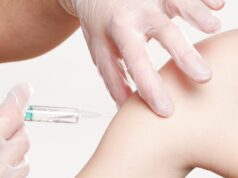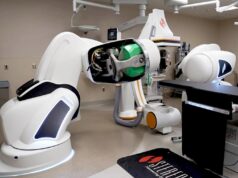
A joint document has been issued by the Heart Rhythm Society (HRS), the American Heart Association (AHA), and the American College of Cardiology (ACC) to provide guidance for clinicians and institutions on re-establishing safe electrophysiological (EP) care.
Published in Heart Rhythm by Dhanunjaya Lakkireddy (Kansas City Heart Rhythm Institute, Kansas, USA) and colleagues, the document aims to address the “uncertainty as to how and when to resume and deliver electrophysiology services for arrhythmia patients”.
Lakkireddy et al write: “Creating a relatively COVID-19 safe clinical care continuum and environment is an important strategy that can regain patient confidence and enable health care institutions to start providing elective cardiovascular and EP procedures. ‘Rebooting’ EP at many institutions may be more challenging than ‘shutting down’. Electrophysiologists may have to work with other services for limited resources and space. This may require hospital leadership understanding the urgency of EP care as it relates to other services.”
Lakireddy told Cardiac Rhythm News: “Restoring clinical services while maintaining the highest level of safety and gaining the confidence of patients to come back to hospitals will be the biggest challenge we will face.”
The guidance acknowledges that the degree to which patient outcomes have been adversely impacted by delaying the delivery of usual cardiac care is not yet fully understood, but early data suggests patients may be suffering worse outcomes due to delayed presentations. “Many chronic diseases and acute medical conditions often require a non-urgent, but time-sensitive, intervention to prevent them from becoming emergencies or having long-term sequelae. Questions remain as to how long one can delay these nonurgent medical interventions to prevent patients from developing undesirable outcomes.”
Guidance for rebooting electrophysiology through the COVID-19 pandemic focuses on areas such as understanding regional and local COVID-19 disease status, the role of viral screening and serological testing, return-to-work considerations for exposed or infected health care workers, risk stratification and management strategies based on COVID-19 disease burden, institutional preparedness for resumption of elective procedures, patient preparation and communication, prioritisation of procedures, and development of outpatient and periprocedural care pathways.
It also advises on how to manage in-person cardiovascular implantation electronic device (CIED) interrogation, and remote device monitoring, and advocates the use of a “COVID-19 EP reboot team”, saying: “When possible, an EP COVID-19 working group representing the stakeholders involved in the EP care continuum pathway can coordinate with institutional or hospital-level COVID-19 leadership.”
The guidance also urges institutions to anticipate and manage the second wave: “Appropriate planning for dealing with a second wave should be a mandatory component of the elective reboot plan. We will have to learn to create relatively COVID-19 safe zones within the hospitals to help isolate patients from second waves and yet be able to provide regular care for non–COVID-19 patients.”
It concludes: “As EP professionals, we need to determine how we can minimise the ravages of living with COVID-19 while ensuring that we provide exemplary care to our arrhythmia patients across all age-groups. In this document, we have tried to provide EP clinicians and institutional administrators with a series of guiding suggestions and principles to move forward as we start the ‘reboot’ to provide necessary heart rhythm care to our patients, which has understandably and appropriately been delayed.”












